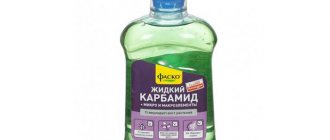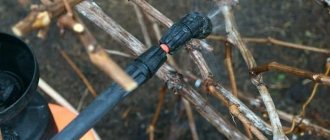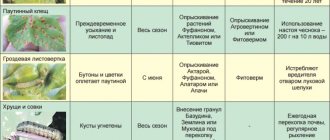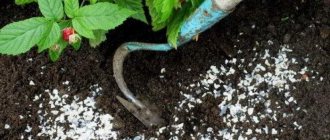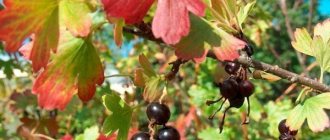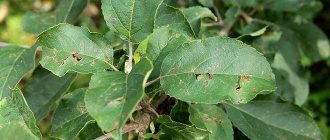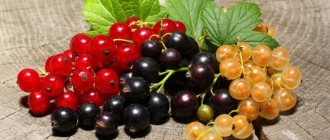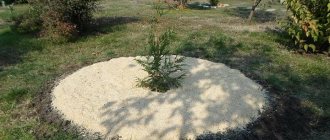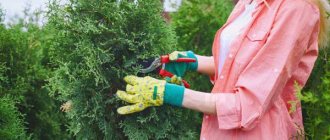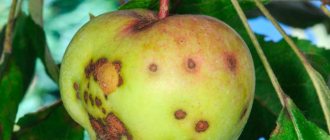Purpose and features
It is worth treating peach in the spring to prevent leaf curl, prevent complete loss of the crop, and create a barrier against viruses, fruit rot, moniliosis, leaf spot, and powdery mildew. Care begins with the introduction of the first foliar feeding, which increases strength after the cold weather has subsided.
Specifics of working with mature old and young plantings
It is necessary to process peach in autumn and spring. When caring for adult plants, spraying of peaches is carried out fully without violating the technology. When there is no flowering or fruiting, the tree attracts less attention from parasites. 3 processing steps are enough:
- When the buds are in a dormant state, to remove diseases and insects living in the bark and soil.
- During the period of bud break.
- After flowering is completed, to provide protection to the ovaries. At this time, a monilial burn is dangerous.
On a note! Peach, a fast-bearing tree, will delight you with a tasty harvest already in the 3rd year after planting, subject to proper care.
Security measures
Regardless of how safe the formulations are, according to the manufacturer’s recommendations, direct contact with the drugs is prohibited. If careless, serious harm to health can be caused. For example, iron sulfate is deadly and can lead to death. Accordingly, you need to use personal protective equipment:
- respirator;
- mask;
- gloves;
- boots;
- suit;
- It is advisable to cover your hair with a material that repels various vapors and drops.
How to properly spray peach in spring
In spring it is treated to protect cut areas. As additional measures, you can treat the cut with dissolved copper sulfate or a product containing copper. Gardeners advise regular pruning until the buds swell. It is necessary to remove all young branches 3 buds from the very top. Often infections are found in them, and healthy branches of the plant become infected. Usually after one pruning the pests disappear. You need to process the peach in the spring before the buds open, in March.
Recommendations:
- Do not treat during flowering so that the product does not get into the future fruits of the tree
- To avoid clogging the siphon, you need to use a special mesh for the filter.
- The solution must be at ambient temperature.
When using a solution of copper sulfate, you need to use hot water. And when using a biological product, use water that does not contain chlorine.
Stages and deadlines
When caring for peach in the spring, spraying is done before the buds open, when they are not yet activated. At this time, the air temperature varies between +4+5 °C. Treatment is called eradicative because it removes viruses, diseases and parasites before they awaken from hibernation.
Note!
The compositions are applied to the trunk, branches, and soil at the base of the roots.
When the buds swell, treatment is also necessary. This is the time when the buds are blooming, but the foliage has not yet unfolded from the cocoon. Spraying a peach in the spring in March at this phase is extremely important, since the procedure builds immunity for the entire upcoming season. Preference is given to the following drugs:
- Raek - klyasterosporiosis. Application is possible at air temperatures above +15 °C.
- Skor and Horus - leaf curl. Suitable for use at temperatures below +15 °C.
- Abiga-pik, Khom, Polychom are fungicidal agents based on copper.
- Aktara - weevils.
- Bordeaux mixture.
- Urea in combination with any vitriol.
- Preventative
- Drug 30 plus.
In spring, care is necessary at each stage of fruit formation and always during the period when the buds are formed, but before they open:
- Horus, Skor fight against cleasterosporiasis, curl, and monilial burns.
- Topaz is used for powdery mildew.
- Aktara is suitable for removing the copperhead.
- Insegar destroys the leaf roller, which is a moth-miner.
- Karate Zeon removes ticks.
On a note!
In the spring, peach after flowering must be sprayed comprehensively against diseases and pests in order to protect the resulting ovaries from all kinds of influences.
Moniliosis, the codling moth, is especially annoying during this period. The drugs chosen are based on the type of attacking insect or disease:
- Horus, Skor help with clasterosporiosis, leaf curl, monilial burn, fruit rot.
- Topaz for powdery mildew.
- Insegar, Voliam, Flexi, and Proklem can cope with leaf rollers, codling moths, and moths.
Clusterosporiasis can be removed with iron sulfate or copper sulfate. It is possible to save a peach from curling by amputating the affected leaves.
Main diseases and pests of peach
Weak immunity makes the plant defenseless against diseases. The most common ailments are fungi.
Cytosporosis affects the thin layer between the wood and the bark. Dark spots form on the surface, which destroy young shoots and apical shoots.
Monilial burn appears on the aerial parts of the peach. The disease becomes more active in early spring and summer. On infected specimens, branches, buds and ovaries dry out. The spores penetrate the fruits, turning the surface of the fruit brown. The disease is spread by parasites (codling moth, weevil) in cool, damp weather.
Leaf spotting occurs during a long spring. Red marks form on the plates and young shoots, which gradually kill healthy tissue.
Powdery mildew coats parts of the peach with a thin, silvery coating of mycelium. The fruits crack, lose their taste, and are poorly stored.
Dangerous klyasterosporiosis affects greenery with crimson spots that gradually turn into holes. With severe infestation, the bark cracks and gum flows from the wounds. Infection occurs during swelling of the kidneys. The disease quickly invades healthy tissue and gradually destroys the plant.
Peach is affected by all common pests. Blood aphids, spider mites and scale insects feed on young shoots and foliage, causing the tree to weaken. Weevils eat buds and buds, codling moths eat fruit. Both types of insects carry infections and fungi.
Processing rules
Spraying peach in the spring is done in weather without rain, wind or scorching rays of the sun. It is advisable to choose morning hours after the dew has dried or evening hours after sunset. When applying compounds early, when there is frost, their effectiveness will decrease. The treatment should be done after the tree has been pruned, which will protect the cut areas from infection. The use of copper sulfate and Bordeaux mixture is relevant here.
Recommendations:
- During flowering, it is prohibited to use drugs even in small proportions. This will harm the bees that pollinate the flowers and the plant itself.
- Before pouring into a container with a sprayer, the prepared compositions are passed through gauze.
- To dissolve chemicals, you need water at room temperature, and for any type of vitriol, +40+50 °C is suitable.
To dissolve biological preparations, settled or filtered water is used.
On a note!
If it rains after applying the contact agent, then re-treat.
In the case of system tools, this is not required.
The best preparations for treatment
When working with fruit trees, chemicals give more effective results. In some cases, their use is the only way to overcome fungus and other diseases and pests. In order not to harm the plantings, it is important to select the correct dosage and processing time.
Biological preparations are a gentle way to care for a plant, and they can be treated in autumn and spring. They are used for:
- detection of a small colony of insects;
- identifying fungus at an early stage of development;
- preventive work.
There are also fungicides and chemical antifungal compounds. With regular processing, that is, 4-5 times per season, the effectiveness decreases. The spores develop addiction and resistance to the constituent components. Among many species, gardeners prefer:
May be interesting Description of the peach tree: what it looks like, where it grows Diseases and pests of peaches: measures to combat them, their treatment Step-by-step instructions for spring pruning of a peach tree
- Horus;
- Strobe;
- Soon;
- Fitosporin M universal;
- Urea (carbamide).
Chemical insecticides are intended to control pests during the period when they have already settled on the bark and leaves. They are not suitable for preventive maintenance.
- Decis.
- Iskra-Bio;
- Fitoverm.
Biological products with fungicidal and insecticidal action against pests and diseases are a little weaker than chemical compounds, and in their production they use:
- antagonistic mushrooms;
- bacteria;
- bacterial virus;
- beneficial insects.
How to spray a peach
To eliminate insects, there are many chemicals on the market that have different functions and mechanisms of action. Each product has instructions that must be followed so as not to harm yourself, the trees and the surrounding environment.
Purchased funds
Eradication treatments can be carried out when the peach is at rest. A loading dose of the drug is required for effect. Typically, such products are highly toxic.
Apply:
- Dnok. A very strong drug. Used only on farms. Can be used once every 3 years. Do not spray in residential areas. To be dissolved in 2 stages. May be toxic to humans. When using, personal protective equipment must be used. It is necessary to strictly observe the proportions and dosage.
- Nitrafen. The drug is highly toxic. Can be used in those years when the drug Dnok is not used. The solution should be made at the rate of 300 g per 10 liters of liquid.
- Copper sulfate. The most commonly used drug. In solution at high concentrations it is used to treat the bark and trunk. A less concentrated solution can be used to combat fungal infections. A 0.2% solution can be used as a fertilizer. The drug is diluted in hot water so that it does not have sediment.
On a note!
Copper sulfate is highly acidic, which can be detrimental to a large number of plants.
To reduce the acidity of a solution of copper sulfate, lime is often added to it, when mixed, Bordeaux mixture is formed. It is necessary for cultivating the soil. The solution is not stored for a long time. The effect lasts no more than 24 hours. For loading doses, 500 g of liquid is used, and 100 g as a prophylactic agent.
Iron sulfate is used as a preventative treatment for saw cuts and wounds on trees. It inhibits the awakening of the buds, which has a beneficial effect on the tree during a long winter. Use in early spring to avoid burning the buds. The solution should be used immediately after preparation. The treatment is repeated after 2 weeks.
Fungicides serve as antifungal drugs. The tree may become addictive, so it is recommended to alternate them.
Preparations:
- Horus. It fights well against curling and purple leaves. Process three per season. The period of protective treatment lasts about 7 days.
- Speed Acts against peach diseases - curl and powdery mildew. After application, young leaves grow again on the plant and the formation of buds for the next season increases. The solution is prepared at the rate of 2 ml per 10 liters of water.
- Strobe. Has a fairly wide range of action. Inhibits the development of fungal infections. When used, it forms a protective film on the leaves. After a week, the treatment must be repeated. For prevention, tree trunk circles also need to be sprayed.
- Fitosporin. A universal drug, especially effective against spores of Bacillus subtilis. It can be used as both a preventative and a therapeutic agent. Fitosporin is not dangerous for humans; it can be used already when the fruits are ripening. Can be used at any time, during the entire ripening period.
- Urea. Contains an amount of nitrogen. Used to combat aphids, weevils, copperhead, and various fungal diseases. Treated in the spring against diseases and pests. Don't be afraid of an overdose of fertilizers; it's not scary for peach.
Insecticides are used to control pests in the spring. Decis is a kind of “ambulance” for the plant. Acts instantly, maintaining protective properties for 2 weeks. May accumulate in soil, should not be used regularly.
Iskra bio is a biological preparation for the elimination of aphids and mites. Insects are affected instantly. Peaches can be eaten a few days after use.
Fitoverm acts on all types of pests. They usually die 7-10 days after application.
Folk remedies
Traditional methods can be used to treat peach trees. They are environmentally friendly and safe for gardening and humans.
You can prepare a tobacco infusion:
- 0.5 tobacco pour 10 liters of water;
- leave for 48 hours;
- boil for 1 hour;
- 1 liter of concentrate goes to 10 liters of water;
- Add 40 g of soap to the soap solution.
You can take tobacco dust.
On a note!
Treating peach trees in the spring will help prevent pest attacks.
You can use chamomile remedy:
- Pour 0.5 kg of dried flowers into 5 liters of boiling water;
- leave for 12 hours;
- add 40 g of laundry soap;
- add 10 liters of water;
- strain;
- used for processing the trunk and crown.
Another good remedy can be prepared from:
- dried pepper pods – 100 g;
- boiling water – 1 l.
Cook for 2 hours. Leave for another 2 hours, strain and dilute with 10 liters of water. Treat foliage and shoots.
Prevention
Spraying peach in early spring is accompanied by a number of additional measures to protect, improve growth, development and fruiting. They remove excess ovaries and shoots that have not yet become woody. Fruit planting has a high rate of crown formation. Trimming half-woody branches in certain places helps to activate the growth of young shoots of the second order, which can easily withstand winter frosts.
Preventative work:
- Thinning the ovaries. The branches with fruits should be located at a distance of at least 20 cm relative to each other. Otherwise, the peaches will not be so sweet and large.
- Thinning has a healing effect. A solitary fruit is rarely affected by codling moth and rot. Even if one berry dies, the rest may remain untouched.
Regular watering is required. Following technology is a way to increase the tree’s immunity and avoid spraying with chemicals to remove pests.
How best to carry out processing - step-by-step instructions
We told you what to spray peaches in the spring. But it is much more important to follow all the necessary spraying rules, otherwise all your efforts will be in vain - you will waste a lot of solution and will not be able to cope with pests. After this, remove all debris and burn old leaves and branches to destroy insects and fungal spores. It is advisable to carry out the spraying itself on a windless day in the morning or evening, so that the chemicals are not carried by the wind throughout the garden.
It would be good to study the weather forecast for the next couple of days - if rain is forecast, it is advisable to move the work to another time so that the rain does not wash away the chemicals. If this happens, the procedure must be carried out again.
The most important thing for you during this period is to achieve the finest possible spraying, treating the entire surface of the plant (tree trunk, shoots, foliage). The first hole in the spring is made using a watering can with large holes - this will allow you to spray the entire volume of the solution onto the tree. Thanks to the large holes, liquid can even get into microcracks in the bark, killing all parasites.
By the way, many gardeners, wanting to achieve maximum efficiency from their work, use comprehensive measures to combat parasites in their gardens, spraying peach trees with both fungicides and insecticides. This mixture will destroy both insects and parasites. The main thing is not to use the same products for a long time, to which pests quickly get used. Knowing what to spray peaches with in early spring and how exactly to carry out all the measures to protect the garden from parasites, you can protect the trees from parasites. Thanks to this, the trees will produce an excellent harvest in the form of tasty and large fruits.
